ISO 9001 Requirements Checklist: A Comprehensive Guide
Last Updated on October 13, 2025 by Hafsa J.
ISO 9001 Requirements Checklist
If you’ve ever looked into getting ISO 9001 certified, you’ve probably come across the term ISO 9001 Requirements. At first glance, these requirements might seem like a complex set of rules buried in technical jargon. But here’s the good news: once you break them down, they’re actually a practical, easy-to-follow framework for improving your business.
Think of ISO 9001 Requirements as a recipe for success—a step-by-step guide to creating a structured, efficient, and customer-focused company. Whether you’re a quality manager ensuring compliance or a business owner looking to improve operations, understanding these requirements will help you streamline processes, reduce risks, and enhance customer satisfaction.
In this guide, we’ll take a deep dive into ISO 9001 Requirements, explaining what they are, why they matter, and how to apply them to your business. By the end, you’ll have a clear roadmap for implementing ISO 9001 in a way that makes sense for your company.
Here’s what we’ll cover:
- What ISO 9001 Requirements are and why they matter
- A breakdown of the key clauses you need to focus on
- How to implement ISO 9001 effectively
- Common challenges and how to overcome them
If you’ve been struggling to make sense of the ISO 9001 Requirements, don’t worry—you’re not alone. But once you see how they can help your business run more smoothly and efficiently, they won’t feel like a burden. Instead, they’ll feel like a powerful tool for driving growth and success.
Let’s dive in and make ISO 9001 Requirements simple, clear, and actionable!
What Are ISO 9001 Requirements?
Understanding the ISO 9001 Requirements
So, what exactly are the ISO 9001 Requirements, and why do they matter?
Simply put, ISO 9001 Requirements are a set of internationally recognized guidelines that help businesses create a structured, consistent, and high-quality way of working. They form the foundation of a Quality Management System (QMS)—a system designed to ensure that your business delivers reliable products or services, meets customer expectations, and continuously improves over time.
Think of them as the rules of the game for quality management. Just like a professional sports team follows a structured training plan to stay at the top of their game, businesses that follow the ISO 9001 Requirements can operate more efficiently, reduce errors, and gain a competitive edge.
But here’s the thing—these requirements aren’t a rigid, one-size-fits-all checklist. Instead, they provide a flexible framework that businesses of any size or industry can adapt to their specific needs. Whether you run a small local business or a multinational corporation, implementing ISO 9001 Requirements can help streamline your processes, boost customer trust, and improve overall performance.
Why Do ISO 9001 Requirements Matter?
At first glance, the ISO 9001 Requirements might seem like just another set of compliance rules. But in reality, they are designed to help businesses grow and succeed. Here’s why they matter:
- They ensure consistency – Customers love reliability. When businesses follow the ISO 9001 Requirements, they create standardized processes that produce consistent, high-quality results.
- They improve efficiency – ISO 9001 isn’t just about quality—it’s also about cutting waste, optimizing workflows, and eliminating unnecessary steps that slow down productivity.
- They enhance customer satisfaction – Meeting ISO 9001 Requirements helps businesses better understand customer needs, reduce complaints, and build long-term customer trust.
- They open doors to new opportunities – Many large companies and government contracts require suppliers to be ISO 9001 certified. Meeting these requirements can give businesses a competitive advantage in winning new clients and expanding into new markets.
- They create a culture of continuous improvement – Businesses that follow ISO 9001 Requirements are always looking for ways to improve, whether it’s through better training, smarter processes, or innovative solutions.
Breaking Down the ISO 9001 Requirements
Now that you know why ISO 9001 Requirements are important, let’s take a closer look at what they actually involve. ISO 9001 is divided into 10 sections (clauses), but only Clauses 4-10 contain mandatory requirements.
- Clause 4 – Context of the Organization: Understanding your business environment and defining the scope of your QMS.\
- Clause 5 – Leadership & Commitment: How top management drives quality initiatives.
- Clause 6 – Planning for Risks & Opportunities: Identifying risks, setting goals, and planning for change.
- Clause 7 – Support: Resources, Communication & Awareness: Ensuring employees have the right training, tools, and information.
- Clause 8 – Operation: Implementing Quality Processes: Managing day-to-day business activities to ensure quality.
- Clause 9 – Performance Evaluation & Monitoring: Measuring success through audits, customer feedback, and performance tracking.
- Clause 10 – Continual Improvement: Making ongoing improvements to processes, products, and customer satisfaction.
Each of these ISO 9001 Requirements plays a crucial role in helping businesses stay organized, maintain high-quality standards, and continuously evolve.
In the next section, we’ll dive deeper into these key ISO 9001 Requirements, breaking them down into simple, actionable steps you can follow to implement them effectively in your business. Stay with me—you’re about to see how ISO 9001 can be a game-changer for your company!
Breaking Down the Key ISO 9001 Requirements
Now that we understand why ISO 9001 Requirements matter, let’s break them down into practical, easy-to-follow sections. If you’ve ever felt overwhelmed looking at ISO standards, don’t worry—we’re going to simplify everything and explain how each requirement fits into the bigger picture.
ISO 9001 is structured into 10 clauses, but only Clauses 4-10 contain actual ISO 9001 Requirements that businesses must meet to get certified. Let’s go through them one by one.
Clause 4 – Context of the Organization
Before jumping into quality processes, businesses need to define their operating environment. This clause focuses on:
- Understanding Internal & External Factors – What influences your business? Think about market conditions, customer expectations, industry trends, and competitor activities.
- Identifying Stakeholders – Who has a stake in your quality? Customers, suppliers, employees, and regulators all play a role.
- Defining the Scope of the QMS – What parts of the business will be included in the Quality Management System? If you’re a manufacturing company, does your QMS cover only production or the entire supply chain?
This section helps businesses set clear boundaries for their ISO 9001 implementation, making sure quality efforts are focused on the right areas.
Clause 5 – Leadership & Commitment
ISO 9001 isn’t just a quality department responsibility—it requires commitment from top management. Clause 5 ensures that business leaders actively support quality initiatives.
- Establishing a Quality Policy – Leadership must define a quality mission statement that aligns with the company’s goals.
- Assigning Roles & Responsibilities – Who is responsible for ensuring compliance with ISO 9001 Requirements? Everyone, from executives to frontline employees, should understand their role.
- Promoting a Culture of Quality – Quality isn’t a one-time project; it should be embedded into daily operations. This means training employees, recognizing quality achievements, and continuously improving processes.
When leadership is fully invested in ISO 9001, businesses see better results, stronger engagement, and a smoother certification process.
Clause 6 – Planning for Risks & Opportunities
Every business faces risks—but successful ones plan for them in advance. This clause encourages proactive thinking instead of reactive problem-solving.
- Risk-Based Thinking – Instead of waiting for problems, businesses must identify potential risks (supply chain issues, equipment failures, customer complaints) and create preventive measures.
- Setting Quality Objectives – Companies must define SMART goals (Specific, Measurable, Achievable, Relevant, Time-bound) for improving quality.
- Planning for Change – Whether launching a new product, expanding operations, or updating policies, businesses need a plan to ensure quality remains consistent.
By integrating risk management into daily operations, businesses stay agile, prepared, and ahead of competitors.
Clause 7 – Support: Resources, Communication & Awareness
Quality doesn’t happen by accident—it requires the right people, training, and resources. Clause 7 ensures businesses have what they need to maintain ISO 9001 compliance.
- Providing Necessary Resources – This includes trained staff, proper equipment, updated technology, and enough budget to support quality efforts.
- Employee Training & Competence – Employees must be properly trained and qualified to perform their roles effectively. Businesses must maintain records of training and certifications.
- Internal & External Communication – Clear, effective communication is key. How do employees know about quality expectations? How do customers give feedback?
- Document Control & Record Keeping – All ISO 9001 Requirements rely on clear, accurate documentation. Companies must ensure that quality manuals, policies, and procedures are well-maintained and up to date.
Without proper resources and communication, even the best quality strategies will fall apart. This section ensures businesses stay organized and informed.
Clause 8 – Operation: Implementing Quality Processes
This is where businesses put their quality management plans into action. Clause 8 focuses on delivering quality products and services consistently.
- Managing Customer Requirements – Are businesses clearly defining what customers need before delivering a product or service?
- Design & Development Controls – If a business creates custom products, there must be a process for ensuring design accuracy and meeting specifications.
- Production & Service Delivery – Whether manufacturing physical products or providing services, businesses must ensure consistent quality, proper inspections, and defect prevention.
- Supplier & Outsourcing Management – Many companies depend on suppliers, so ISO 9001 Requirements ensure that external partners meet quality standards.
By following this section, businesses create standardized processes that keep customers happy and operations running smoothly.
Clause 9 – Performance Evaluation & Monitoring
You can’t improve what you don’t measure. This clause requires businesses to track performance and make data-driven decisions.
- Monitoring & Measuring Key Processes – Are quality processes working? Companies must define key performance indicators (KPIs) to measure success.
- Internal Audits – Regular ISO 9001 internal audits help identify gaps and areas for improvement before an external auditor does.
- Customer Feedback & Satisfaction – Businesses must actively collect and analyze customer complaints, surveys, and reviews to improve quality.
- Management Reviews – Top leadership must regularly review QMS performance, ensuring the business is on track for long-term success.
- By keeping a close eye on quality performance, businesses can fix issues early and continuously refine their processes.
Clause 10 – Continual Improvement
ISO 9001 isn’t about getting certified once and forgetting about it—it’s about continuous growth. Clause 10 focuses on how businesses should evolve over time.
- Addressing Non-Conformities – If a mistake or defect happens, businesses must analyze the root cause and take corrective action.
- Improving Processes & Systems – Every internal audit, customer complaint, and performance review should lead to some level of improvement.
- Encouraging Innovation – Businesses should always look for ways to improve efficiency, reduce costs, and enhance quality.
By following this final clause, businesses create a long-term culture of excellence, making ISO 9001 a continuous journey, not just a one-time certification.
Final Thoughts: ISO 9001 Requirements as a Roadmap for Success
At first glance, the ISO 9001 Requirements might seem like a lot, but when broken down, they provide a clear, structured approach to quality management.
By implementing these requirements, businesses can:
- Ensure consistency and reliability in products/services
- Reduce operational risks and improve efficiency
- Enhance customer trust and satisfaction
- Build a culture of continuous improvement
The best part? ISO 9001 isn’t just about compliance—it’s about making your business better in every way.
Now that we’ve explored the core ISO 9001 Requirements, the next step is understanding how to implement them effectively in your organization. In the next section, we’ll walk through a step-by-step guide to achieving ISO 9001 compliance in a way that’s simple, practical, and tailored to your business needs.
Let’s get started!
How to Implement ISO 9001 Requirements Successfully
Now that we’ve broken down the ISO 9001 Requirements, the next big question is: How do you implement them in your business?
If you’re feeling a little overwhelmed, don’t worry—you’re not alone! Many businesses start with the same concern: “Where do we even begin?” The good news is that implementing the ISO 9001 Requirements doesn’t have to be complicated or disruptive. When approached step by step, it becomes a manageable and rewarding process that leads to real improvements in efficiency, quality, and customer satisfaction.
Let’s walk through a practical, easy-to-follow approach to achieving compliance with ISO 9001 Requirements in your business.
Step 1: Conduct a Gap Analysis
Before making any changes, it’s important to understand where your business stands in relation to the ISO 9001 Requirements. This is where a gap analysis comes in.
- Review your current processes – How does your business currently handle quality management?
- Compare against ISO 9001 Requirements – Identify what’s already in place and what’s missing.
- List areas for improvement – These could include documentation gaps, training needs, or process inefficiencies.
A gap analysis helps you pinpoint exactly what needs to be done, so you’re not wasting time on things that are already working.
Step 2: Develop a Quality Management System (QMS)
Your Quality Management System (QMS) is the foundation of your ISO 9001 compliance. Think of it as your business’s “playbook” for quality.
- Document your processes – Clearly define how tasks should be performed to ensure consistency and efficiency.
- Create a quality policy – This is your company’s commitment to quality and should be communicated to employees and customers.
- Define roles and responsibilities – Who is in charge of quality control, documentation, and audits?
- Establish procedures for monitoring and improvement – ISO 9001 isn’t just about setting rules; it’s about constantly refining them.
A well-structured QMS ensures that the ISO 9001 Requirements are built into daily operations—not just treated as a one-time project.
Step 3: Train Employees & Build Awareness
For your ISO 9001 implementation to succeed, everyone in the company needs to be on the same page. If employees don’t understand the ISO 9001 Requirements, they won’t be able to follow them.
- Provide ISO 9001 training – Help employees understand why quality matters and how their roles contribute to compliance.
- Make documentation accessible – Employees should know where to find policies, procedures, and work instructions.
- Encourage a culture of quality – Quality isn’t just a department—it’s a mindset that should be part of daily operations.
When employees are informed and engaged, they become active participants in maintaining ISO 9001 compliance.
Step 4: Implement and Monitor Quality Processes
Once your QMS is in place, it’s time to put it into action. This means making sure that every department follows the defined quality procedures.
- Conduct regular process reviews – Are employees following the ISO 9001 Requirements as documented?
- Use performance metrics – Track key indicators like defect rates, customer satisfaction, and operational efficiency.
- Identify bottlenecks – If certain processes are slowing things down, look for ways to streamline them.
Monitoring helps ensure that quality standards are consistently met and that improvements are continuously made.
Step 5: Conduct Internal Audits & Make Improvements
An ISO 9001 Internal Audit is like a quality health check for your business. It helps identify areas that need improvement before an external certification audit takes place.
- Schedule internal audits regularly – These should be conducted at least once a year to ensure compliance with ISO 9001 Requirements.
- Review documentation and records – Are all policies, procedures, and logs up to date and accurate?
- Look for non-conformities – Identify any gaps or inconsistencies and develop corrective actions to fix them.
Internal audits are not about finding faults—they’re about finding opportunities for growth and improvement.
Step 6: Prepare for Certification
Once you’ve implemented the ISO 9001 Requirements and conducted internal audits, it’s time for the final step—certification.
- Choose a certification body – Work with an accredited ISO 9001 certifier to conduct your external audit.
- Conduct a pre-certification audit – This ensures that all ISO 9001 Requirements are being met before the official audit.
- Be prepared for the external audit – The auditor will review your QMS, documentation, and processes to verify compliance.
If your business successfully meets all ISO 9001 Requirements, you’ll receive your ISO 9001 certification, proving your commitment to quality.
Final Thoughts: Implementing ISO 9001 is a Business Game-Changer
Implementing the ISO 9001 Requirements might seem like a lot of work at first, but when done step by step, it becomes a manageable and rewarding process.
By following this approach, businesses can:
- Ensure consistency in products and services
- Improve efficiency and reduce waste
- Enhance customer satisfaction and build trust
- Stay ahead of competitors with internationally recognized quality standards
The best part? ISO 9001 isn’t just about compliance—it’s about making your business better, stronger, and more competitive.
Now that we’ve covered how to implement ISO 9001 Requirements, let’s move on to some common challenges businesses face during the process—and how to overcome them.
Common Challenges in Meeting ISO 9001 Requirements (and How to Overcome Them)
So, you’re on your way to implementing the ISO 9001 Requirements—but let’s be honest, no process is completely smooth. Many businesses face challenges along the way, whether it’s time constraints, employee resistance, or confusion about documentation.
The good news? Every challenge has a solution! Let’s go over some of the most common obstacles businesses encounter when implementing ISO 9001 Requirements and how to tackle them effectively.
Challenge #1: “We Don’t Have Enough Time”
One of the biggest concerns for businesses is finding the time to implement the ISO 9001 Requirements. Many teams are already stretched thin with daily tasks, and adding quality management processes might feel overwhelming.
Solution: Take It One Step at a Time
Instead of trying to do everything at once, break the process into smaller, manageable steps:
- Start with a gap analysis to see where you stand.
- Prioritize the most critical areas first.
- Assign small tasks to different team members to distribute the workload.
ISO 9001 implementation is a marathon, not a sprint—small, consistent progress is better than rushing through it.
Challenge #2: “ISO 9001 is Too Complex for Our Business”
For businesses that have never dealt with ISO standards before, the ISO 9001 Requirements might seem technical, confusing, and difficult to apply.
Solution: Simplify the Process
ISO 9001 doesn’t have to be complicated. Instead of focusing on technical jargon, think of it as a practical framework for improving quality.
- Start by mapping out your existing processes—chances are, you’re already following some ISO 9001 principles without realizing it!
- Use real-world examples when training employees to make it more relatable.
- Focus on what makes sense for your business—ISO 9001 is flexible and can be adapted to your operations.
Once you break it down into simple, actionable steps, implementing the ISO 9001 Requirements becomes much easier.
Challenge #3: “Our Employees Resist Change”
Introducing a new system or process can often lead to pushback from employees. Some may see ISO 9001 as extra work or think it’s just another bureaucratic rule that doesn’t benefit them.
Solution: Get Employees Involved from the Start
- Explain the “Why” – Show employees how ISO 9001 Requirements will make their jobs easier by reducing errors, streamlining processes, and improving work conditions.
- Encourage participation – Involve employees in process mapping, decision-making, and audits so they feel like part of the change, not just affected by it.
- Recognize efforts – Celebrate small wins and acknowledge employees who contribute to quality improvements.
When employees see the value of ISO 9001, they’ll be more likely to support and follow the new processes.
Challenge #4: “Keeping Up with Documentation is a Hassle”
Many businesses struggle with keeping track of policies, procedures, records, and quality documents—especially when it feels like paperwork is piling up.
Solution: Go Digital & Stay Organized
- Use document management software to store, track, and update quality documents easily.
- Create simple templates for policies and procedures to standardize documentation.
- Train employees to update records as part of their regular workflow instead of letting paperwork pile up.
When documentation is organized and accessible, compliance with ISO 9001 Requirements becomes second nature.
Challenge #5: “We’re Worried About Failing the Certification Audit”
Many businesses fear the ISO 9001 certification audit because they worry about not meeting all the requirements or making mistakes.
Solution: Use Internal Audits as a Pre-Check
- Conduct internal audits before the official certification audit to identify and fix any issues.
- Train employees on what to expect during an external audit so they feel confident.
- Have all documents, records, and quality procedures ready and organized.
Remember, ISO auditors are not there to fail you—they are there to verify that you have a working quality management system. If you’ve conducted a thorough ISO 9001 Internal Audit, you’ll be well-prepared!
Final Thoughts: Challenges Are Just Opportunities to Improve
Yes, implementing the ISO 9001 Requirements comes with challenges—but every challenge is also an opportunity to make your business stronger, more efficient, and more competitive.
By tackling issues one step at a time, involving employees, simplifying documentation, and using internal audits, you can successfully navigate the ISO 9001 process without stress.
Now that we’ve covered the common challenges and solutions, it’s time for the final step: How to use ISO 9001 as a tool for long-term success and continuous improvement. Let’s dive in!
Using ISO 9001 Requirements for Long-Term Success and Continuous Improvement
So, you’ve put in the work to implement the ISO 9001 Requirements, overcome the challenges, and even achieved certification—what’s next?
Here’s the secret: ISO 9001 isn’t just about getting certified once and calling it a day. The real value of these requirements comes from using them as a tool for continuous improvement and long-term business success.
The companies that get the most out of ISO 9001 don’t just “check the boxes” for compliance—they embrace the system, refine their processes, and use ISO 9001 as a competitive advantage. Let’s talk about how you can do the same.
1. Make Continuous Improvement a Daily Habit
One of the core principles of ISO 9001 Requirements is continuous improvement. But what does that actually mean for your business?
- Regularly review and refine your processes – Don’t wait until an audit to evaluate performance. Instead, encourage teams to identify inefficiencies and propose improvements all year round.
- Encourage employee involvement – Some of the best ideas for improvement come from employees on the front lines. Create a system where team members can suggest process enhancements.
- Analyze data and customer feedback – Look at key performance indicators (KPIs), audit results, and customer feedback to spot trends and adjust accordingly.
The goal is simple: always look for ways to make things faster, smoother, and better.
2. Keep Internal Audits a Regular Practice
Internal audits aren’t just for preparing for external certification audits—they’re a powerful tool for keeping your business on track.
- Schedule audits throughout the year – Instead of scrambling before an external audit, break audits into smaller, manageable reviews that focus on different areas of the business.
- Use audit results to drive action – Audits should do more than just identify problems—they should lead to meaningful corrective actions and process improvements.
- Train internal auditors for objectivity – Make sure internal auditors know what to look for and how to assess compliance with ISO 9001 Requirements without bias.
By treating internal audits as a proactive quality check, businesses can stay ahead of issues and keep improving.
3. Keep Your Documentation Up to Date
One of the biggest mistakes businesses make is letting their ISO 9001 documentation become outdated. Keeping records current ensures that everyone is following the most effective, optimized version of your processes.
- Review policies and procedures annually – As your business evolves, so should your documented processes.
- Ensure employees have easy access to documentation – If people don’t know where to find the latest work instructions, they might rely on outdated or incorrect information.
- Use digital tools for version control – Cloud-based document management systems help keep records organized, up to date, and accessible.
Good documentation isn’t just about compliance—it’s about helping employees work smarter and more efficiently.
4. Monitor Performance and Set New Goals
Achieving ISO 9001 certification is a big win, but staying competitive requires ongoing performance tracking and goal-setting.
- Set new quality objectives – Use past performance data to define new goals that push the company toward even higher standards.
- Track key performance indicators (KPIs) – Keep an eye on metrics like customer satisfaction, defect rates, and process efficiency.
- Celebrate improvements – When teams hit quality goals, recognize their achievements to reinforce a culture of continuous excellence.
By consistently setting new targets based on real data, businesses can maintain a forward-thinking approach to quality management.
5. Use ISO 9001 to Strengthen Customer Relationships
ISO 9001 isn’t just about internal improvements—it’s also a powerful trust signal for customers. When businesses follow ISO 9001 Requirements, they create a consistent, reliable experience that customers appreciate.
- Communicate your commitment to quality – Let customers know that you’re ISO 9001 certified and explain how it benefits them.
- Actively use customer feedback for improvement – Don’t just collect feedback—use it! If multiple customers mention a specific issue, adjust your processes to address it.
- Showcase quality as a competitive advantage – Many businesses win contracts and attract new clients simply because they can prove their commitment to quality through ISO 9001 certification.
When customers see that your business takes quality seriously, it builds long-term loyalty and trust.
Final Thoughts: ISO 9001 is a Business Growth Tool, Not Just a Standard
At the end of the day, ISO 9001 Requirements are more than just a set of rules—they’re a framework for building a smarter, stronger, and more successful business.
By using ISO 9001 to drive continuous improvement, track performance, engage employees, and strengthen customer trust, businesses don’t just stay compliant—they thrive.
So, what’s next? Keep ISO 9001 alive in your business. Make audits a habit, track progress, set new goals, and always look for ways to improve processes and deliver better results.
ISO 9001 isn’t just about getting certified—it’s about staying competitive, improving efficiency, and keeping customers happy for years to come.
Conclusion: Making ISO 9001 Requirements Work for Your Business
By now, you’ve got a clear understanding of ISO 9001 Requirements—what they are, why they matter, how to implement them, and how to use them for continuous improvement. But here’s the key takeaway: ISO 9001 is not just about compliance—it’s about building a better business.
When applied effectively, ISO 9001 Requirements can:
- Improve efficiency by eliminating wasted time and resources.
- Enhance customer satisfaction by ensuring consistent quality and reliability.
- Create a culture of continuous improvement, making your business stronger over time.
- Open new business opportunities, as many clients prefer or require ISO 9001 certification.
But remember—ISO 9001 isn’t a one-time project. It’s a long-term commitment to quality, efficiency, and excellence.
Your Next Steps: Putting ISO 9001 Requirements into Action
So, what should you do now? Here’s a simple game plan to keep the momentum going:
- Assess where your business stands – If you haven’t already, conduct a gap analysis to see how close you are to meeting the ISO 9001 Requirements.
- Start small, but stay consistent – Implementing ISO 9001 Requirements doesn’t have to be overwhelming. Take it one step at a time, focusing on key areas first.
- Get your team involved – A quality management system works best when everyone participates. Make sure employees understand the benefits of ISO 9001 and how they play a role in success.
- Use audits as a tool for growth – Regular internal audits aren’t just for compliance—they help identify opportunities for efficiency and innovation.
- Keep improving – ISO 9001 is all about continuous improvement. Set new goals, track performance, and refine your processes over time.
Final Thoughts: ISO 9001 as a Competitive Advantage
At its core, ISO 9001 Requirements are designed to help businesses thrive. Companies that fully embrace ISO 9001 don’t just meet standards—they exceed expectations, gaining a competitive edge in their industry.
So, whether you’re just getting started or looking to optimize your existing ISO 9001 system, remember:
- It’s not about perfection—it’s about progress.
- It’s not just a certification—it’s a business strategy.
- It’s not just a requirement—it’s an opportunity to be better every day.
Now, it’s time to put your knowledge into action! Start implementing the ISO 9001 Requirements, and watch as your business becomes more efficient, more competitive, and more successful than ever before.
Ready to move from ISO 9001 theory to implementation?
Get the exact tools you need to write your documentation, train your team, map your processes, and pass your audit—without wasted time or guesswork.

make ISO standards less intimidating and more approachable for everyone.
Whether it’s ISO 9001, ISO 22000, or the cosmetics-focused ISO 22716, I’ve spent my career
turning complex jargon into clear, actionable steps that businesses can actually use.
I’m not here to call myself an expert—I prefer “enthusiast” because I truly love what I do.
There’s something incredibly rewarding about helping people navigate food safety and quality management systems
in a way that feels simple, practical, and even enjoyable.
When I’m not writing about standards, you’ll probably find me playing Piano 🎹, connecting with people, or diving into my next big project💫.
I’m an engineer specialized in the food and agricultural industry
I have a Master’s in QHSE management and over 12 years of experience as a Quality Manager
I’ve helped more than 15 companies implement ISO 9001, ISO 22000, ISO 22716, GMP, and other standards
My clients include food producers, cosmetics manufacturers, laboratories, and service companies
I believe quality systems should be simple, useful, and efficient.


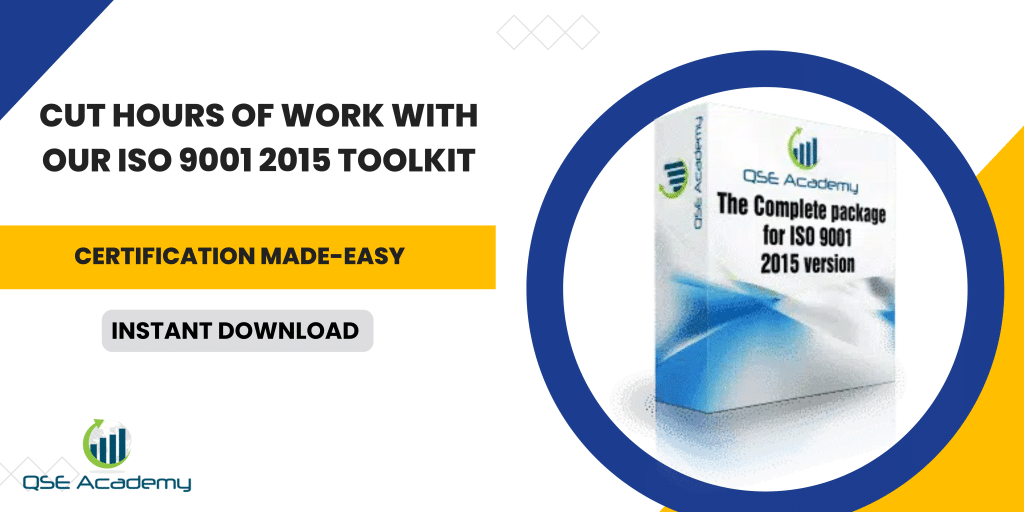

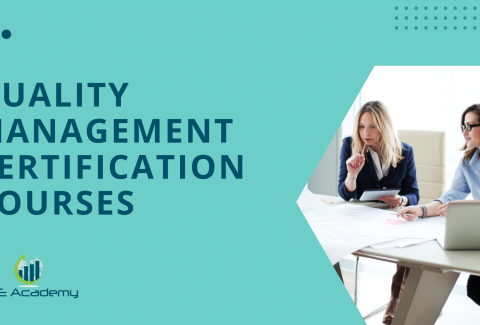
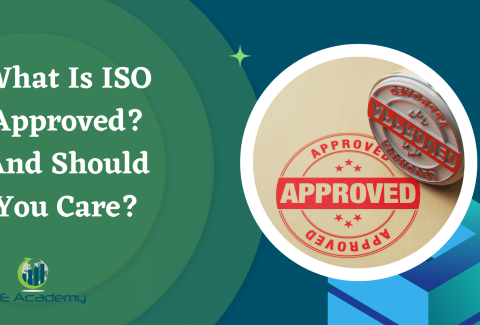
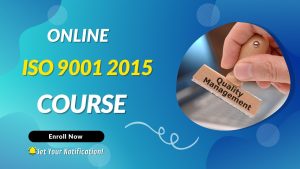
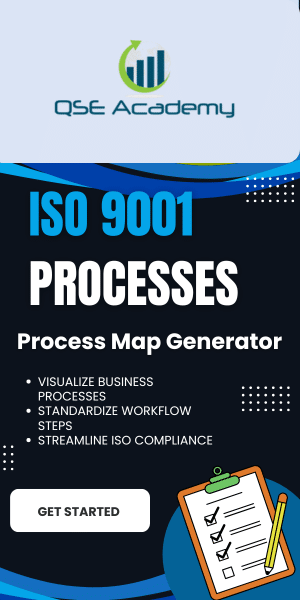
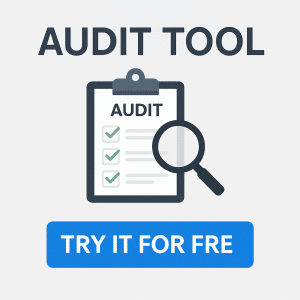



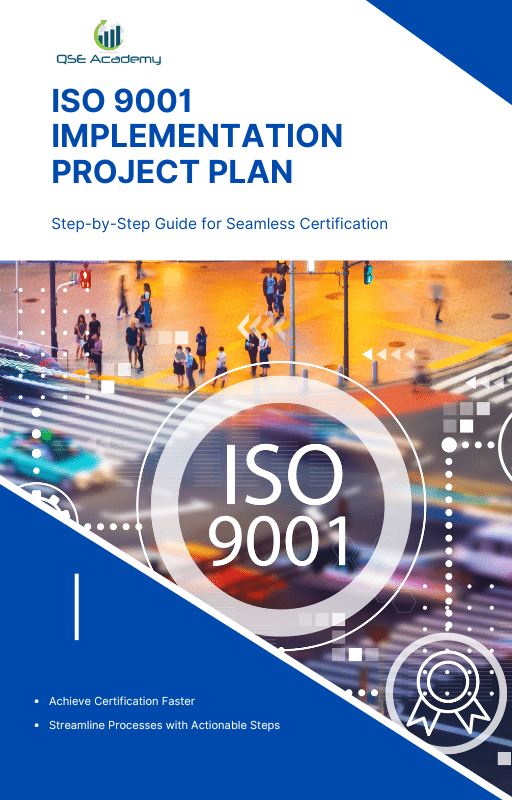
Comment (1)
Engr. Shamsuddeen Dalhatu
This is indeed self explanatory! Wishing to see more of your posts